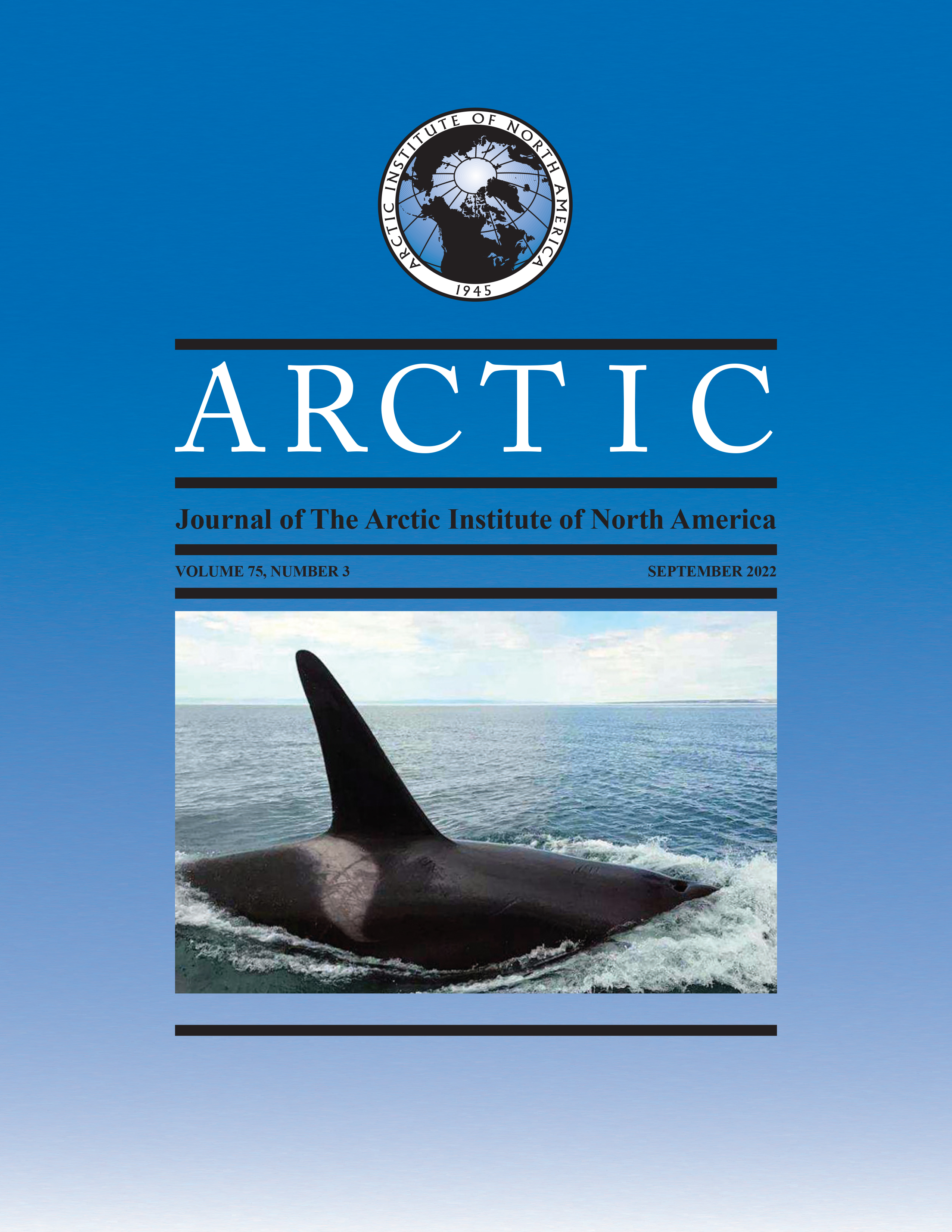Killer Whale (Orcinus orca) Pulsed Calls in the Eastern Canadian Arctic
DOI:
https://doi.org/10.14430/arctic75350Ключевые слова:
killer whale; Orcinus orca; bioacoustics; Canadian Arctic; passive acoustic monitoringАннотация
Killer whales (Orcinus orca) produce a variety of acoustic signal types used for communication: clicks, whistles, and pulsed calls. Discrete pulsed calls are highly stereotyped, repetitive, and unique to individual pods found around the world. Discriminating amongst pod specific calls can help determine population structure in killer whales and is used to track pod movements around oceans. Killer whale presence in the Canadian Arctic has increased substantially, but we have limited understanding of their ecology, movements, and stock identity. Two autonomous passive acoustic monitoring (PAM) hydrophones were deployed in the waters of Eclipse Sound and Milne Inlet, in northern Baffin Island, Nunavut, Canada, in August and September 2017. Eleven killer whale pulsed call types, three multiphonic and eight monophonic, are proposed and described using manual whistle contour extraction and feature normalization. Automated detection of echolocation clicks between 20 and 48 kHz demonstrated little to no overlap between killer whale calls and echolocation presumed to be narwhal, which suggests that narwhal remain audibly inconspicuous when killer whales are present. Describing the acoustic repertoire of killer whales seasonally present in the Canadian Arctic will aid in understanding their acoustic behaviour, seasonal movements, and ecological impacts. The calls described here provide a basis for future acoustic comparisons across the North Atlantic and aid in characterizing killer whale demographics and ecology, particularly for pods making seasonal incursions into Arctic waters.
Скачивания
Загрузки
Опубликован
Выпуск
Раздел
Лицензия
Copyright (c) 2022 ARCTIC

Это произведение доступно по лицензии Creative Commons «Attribution» («Атрибуция») 4.0 Всемирная.


